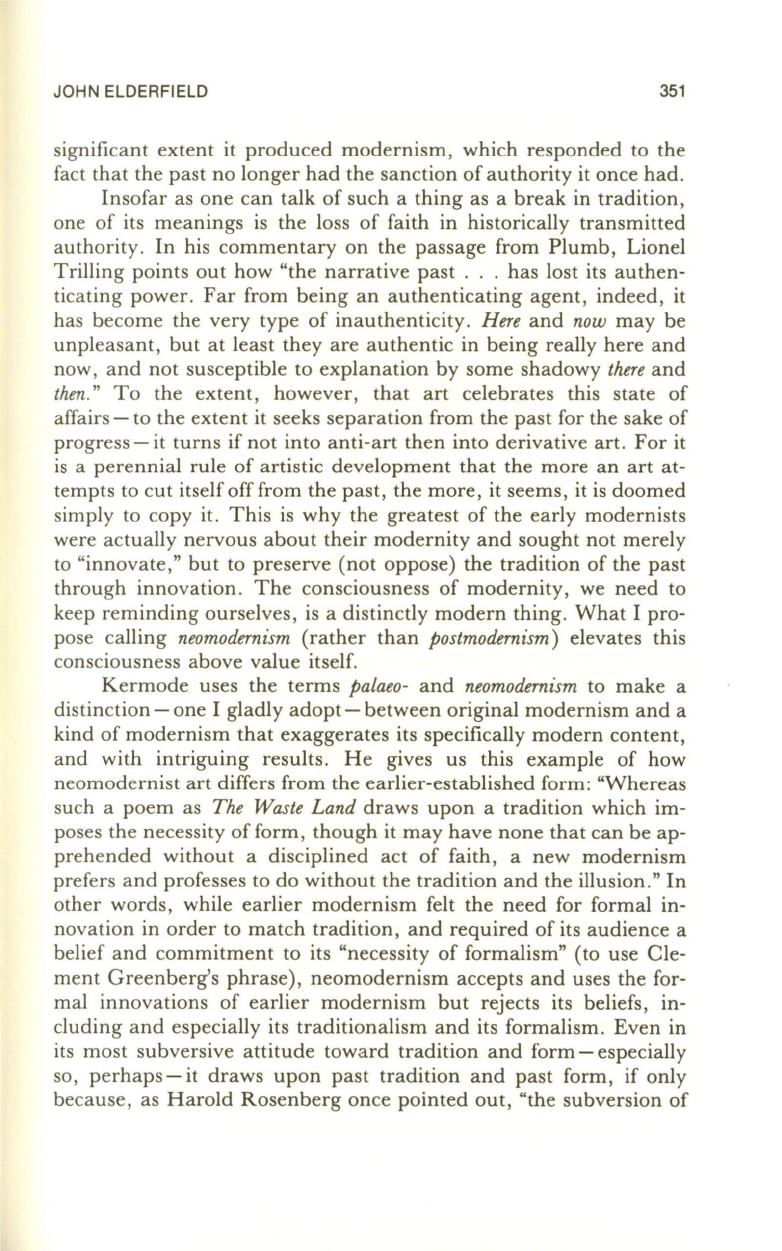
JOHN ELDERFIELD
351
significant extent it produced modernism, which responded to the
fact that the past no longer had the sanction of authority it once had.
Insofar as one can talk of such a thing as a break in tradition,
one of its meanings is the loss of faith in historically transmitted
authority. In his commentary on the passage from Plumb, Lionel
Trilling points out how "the narrative past ... has lost its authen–
ticating power. Far from being an authenticating agent, indeed, it
has become the very type of inauthenticity.
Here
and
now
may be
unpleasant, but at least they are authentic in being really here and
now, and not susceptible to explanation by some shadowy
there
and
then."
To the extent, however, that art celebrates this state of
affairs - to the extent it seeks separation from the past for the sake of
progress - it turns if not into anti-art then into derivative art. For it
is a perennial rule of artistic development that the more an art at–
tempts to cut itself off from the past, the more, it seems, it is doomed
simply to copy it. This is why the greatest of the early modernists
were actually nervous about their modernity and sought not merely
to "innovate," but to preserve (not oppose) the tradition of the past
through innovation. The consciousness of modernity, we need to
keep reminding ourselves, is a distinctly modern thing . What I pro–
pose calling
neomodernism
(rather than
postmodemism)
elevates this
consciousness above value itself.
Kermode uses the terms
palaeo-
and
neomodemism
to make a
distinction - one I gladly adopt - between original modernism and a
kind of modernism that exaggerates its specifically modern content,
and with intriguing results. He gives us this example of how
neomodernist art differs from the earlier-established form: "Whereas
such a poem as
The Waste Land
draws upon a tradition which im–
poses the necessity ofform, though it may have none that can be ap–
prehended without a disciplined act of faith, a new modernism
prefers and professes to do without the tradition and the illusion." In
other words, while earlier modernism felt the need for formal in–
novation in order to match tradition, and required of its audience a
belief and commitment to its "necessity of formalism" (to use Cle–
ment Greenberg's phrase), neomodernism accepts and uses the for–
mal innovations of earlier modernism but rejects its beliefs, in–
cluding and especially its traditionalism and its formalism. Even in
its most subversive attitude toward tradition and form - especially
so , perhaps - it draws upon past tradition and past form, if only
because, as Harold Rosenberg once pointed out, "the subversion of


